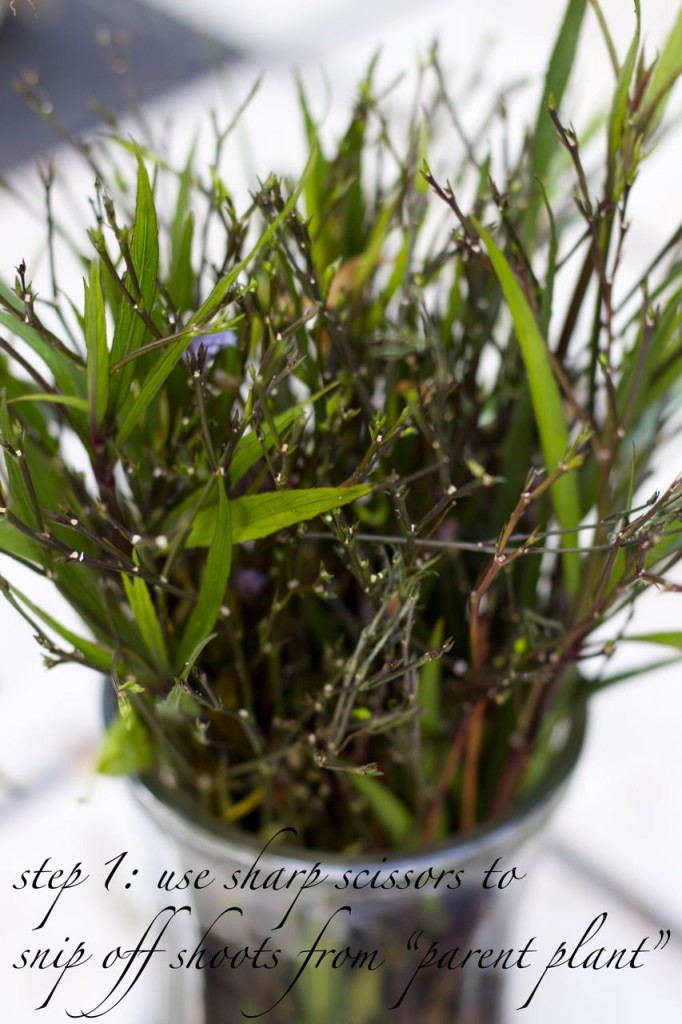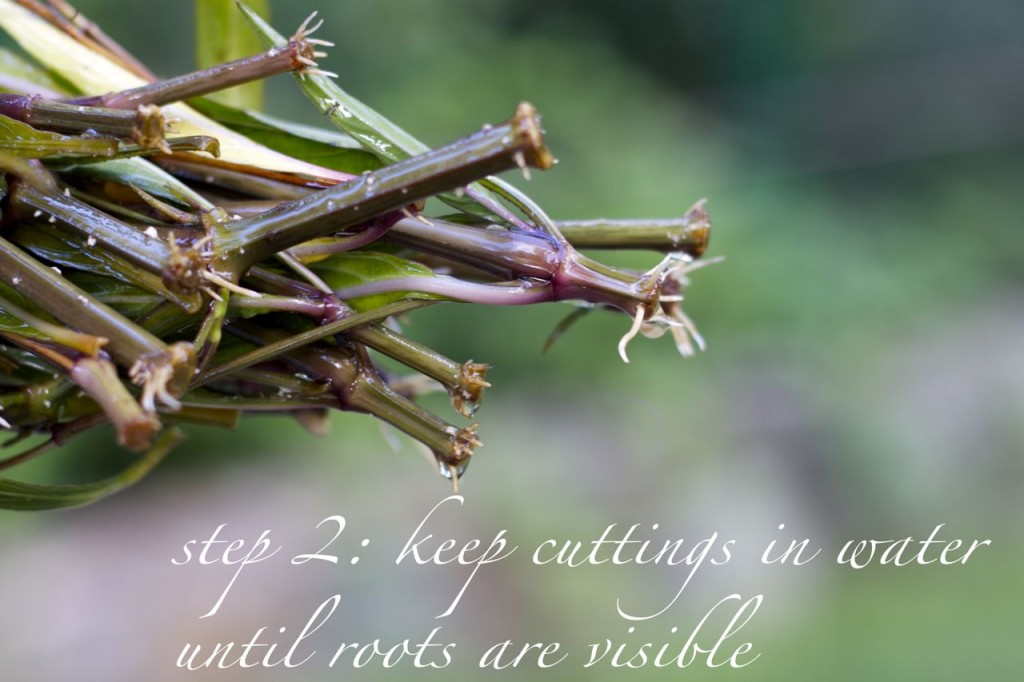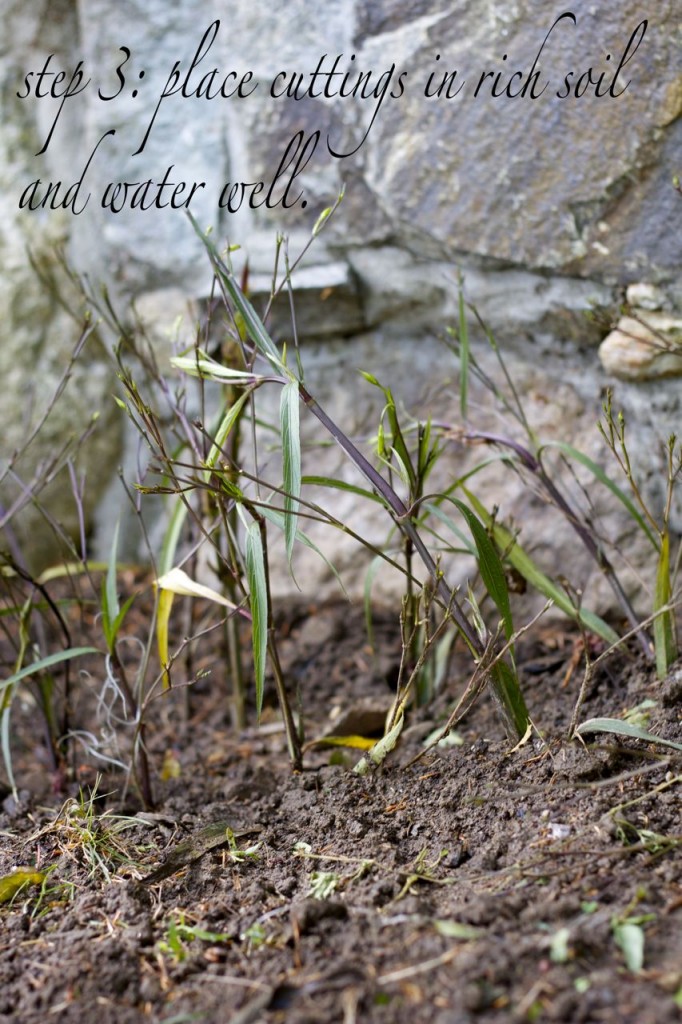
When my mom came over to my house after visiting our friends Eddie and Sharyn down in Florida and handed me a Saran-Wrapped package, declaring “I brought you cuttings,” I was a little confused. I mean, they look like…branches. I didn’t really understand why they were something that my mom might want to carry through airports. But after a little Googling I realized that they’re the loveliest gift ever: they’re basically a way to create little plant “children”.
Aww.
I love this idea, mostly because I remember where each and every plant in our garden came from, and it’s so cool to imagine that in a few years I’ll be able to look at these and know that their “parents” are growing in my faraway friends’ home (theoretically, I mean; we’re talking Remedial Gardener over here, and these plants will need a bit more than a wish and a prayer to make it through alive).
Not all plants will grow from cuttings, but Sharyn assured me that this particular plant – a Mexican petunia – grows “like wildfire” (and can apparently even grow in rainless, concrete parking lots), so I suppose that’s a good start.
Step 1: Using sharp scissors (a sharply cut edge will regrow roots better than a messy one), snip off shoots from the plant, cutting at a slight angle. Make the cuttings about 8″ long, and strip the leaves from the lower third, along with any flower buds (which will pull out too much nutrition).
Step 2: Put the cuttings in a vase of water (adding a little liquid fertilizer, if you have it – I didn’t, but the roots grew just fine anyway) and let them sit out of direct sunlight for a few days, changing the water every couple of days, until you see that roots have begun to grow.
Note: This step apparently varies quite significantly depending on the type of plant you’re trying to grow – some plants will need to be treated with rooting hormone; others should be started in sand or soil – so do a little research before you get started.
Step 3: Place the cuttings in rich soil, spaced a few inches apart from each other, and water well. Subsequent waterings should be done with a “fine mist” to keep the plant hydrated without disturbing the root structure.
(Caveat: I’ve obviously never done anything like this before, so the “steps” above are really just what I gleaned from my Internet scouting; if you have any additional tips, please feel free to put them in the comments!)







